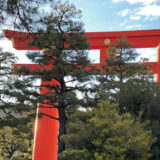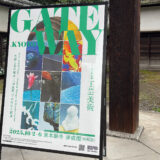Today, as Japanese culture is said to be losing its traditional character, the Japanese garden is probably one of the most important things.
Japanese gardens embody more than mere beauty; they are important in understanding Japanese culture, such as coexistence with nature and spiritual peace.
What is a Japanese garden?
Japanese gardens specialize in imitating nature and using stones, water, and plants to depict the landscape. These elements are planned to encourage reflection and serenity in the viewer.
The rocks represent eternity and strength, the water represents purity and the beauty of change, and the plants represent the changing seasons.
One of the most distinctive elements is the intentional placement of all these elements while mimicking perfect nature.
Differences from Western-style gardens
Japanese gardens and, for example, English gardens (an example of a Western garden) differ fundamentally in their view of nature.
English gardens focus on the domination and shaping of nature.
In contrast, Japanese gardens are characterized by their symbolic abstraction of nature rather than its direct embodiment.
While Western-style gardens typically feature expansive lawns and ornate flowerbeds, Japanese gardens are more subtle and spiritual in their beauty.
Diversity and its relationship with Zen Buddhism and the tea ceremony
While foreign gardens, such as French, Italian, and English gardens, are associated with the culture and history of their respective countries and are understood as the garden style of those countries, Japanese gardens have formed a diverse garden culture by skillfully incorporating cultures introduced from overseas, such as Buddhism and Zen, since the early days of Japanese gardens.
There are various styles, from Zen gardens, such as Karesansui (dry landscape garden), to tea ceremony gardens.
- Karesansui: A garden that uses stones and sand to symbolically represent water and mountains, characterized by the absence of direct water use.
- Chaniwa is a garden designed for the tea ceremony, where walking the path to the tea room is considered a journey that promotes spiritual purification.
- The Chisen Kaiyu-style garden: Designed around a pond or stream, this garden allows visitors to enjoy various views as they stroll through it.
Gardener: An artisan of landscaping
Japanese gardeners are landscaping artisans who interact with nature through their gardens. They work with living materials and create landscapes that change over time.
Gardeners understand the essence of natural materials and have the skill to make the most of them.
More than just a skill, their work expresses culture, philosophy, and art.
Traditional Kogei and Gardens
Japanese gardens convey to the viewer the beauty and serenity of nature and the depth of Japanese culture.
Their close relationship with Zen Buddhism and the tea ceremony shows these gardens are more than mere landscapes.
In a nutshell, Japanese gardens are outdoor and spatial art created by gardeners using nature as a material.
It is a comprehensive art in which a variety of ideas and designs are incorporated and condensed into a garden.
In this sense, there is a great deal of overlap with traditional kogei art.







